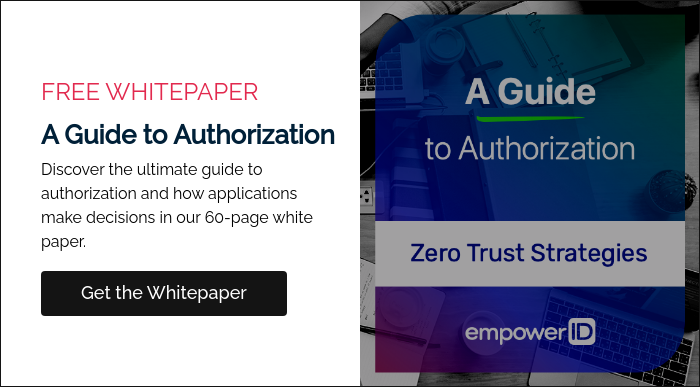
The Siemens Discovery
When Siemens surveyed their identity infrastructure, the scope was staggering: Europe's largest industrial manufacturer managing what Microsoft calls "the world's largest corporate Entra ID" with 569,371 identities generating 4.3 million monthly group changes across 200 different service providers in multiple countries.
Everyone was managing identity based on their own needs, creating operational chaos where new hires experienced what industry experts call "the bad first impression"—waiting days for basic access to essential tools like Microsoft 365. The security imperative was clear—implement Zero Trust to secure this complexity. But what emerged was unexpected: a transformation that eliminated onboarding delays, accelerated Microsoft 365 provisioning from manual requests to instant availability, enabled "doing more with less staff" through self-service operations that reduced help desk reliance, and strengthened security simultaneously.
Siemens' discovery reveals a pattern emerging across enterprises: strategic security investments that generate measurable business acceleration while enhancing protection. Organizations implementing this approach report something extraordinary: their biggest security investments become their most effective business enablers, creating self-funding expansion cycles through operational improvements.
This transformation pattern is reshaping how enterprises approach security modernization across industries.
The Security Investment Dilemma
Most security leaders face an impossible equation: escalating threats demand increasing investment, while business leaders view security as necessary overhead that constrains rather than enables operations.
Forward-thinking organizations discovered a different approach. Instead of positioning security modernization as defensive expense, they recognize it as operational infrastructure that delivers measurable business benefits while achieving protection objectives.
The challenge isn't technical—it's conceptual. Traditional security frameworks add protective layers that often introduce operational friction. Users face additional authentication steps, IT teams manage complex approval workflows, and business processes slow to accommodate security requirements.
The breakthrough insight: strategic security architecture can eliminate friction while enhancing protection. Instead of trading speed for security, leading enterprises build systems that deliver both simultaneously through intelligent automation and streamlined access management that transforms operational efficiency while strengthening defensive capabilities.
How Strategic Security Architecture Works
Understanding strategic security transformation requires recognizing how identity architecture eliminates operational bottlenecks while implementing comprehensive security controls.
The Operational Transformation Pattern:
Traditional approach: Employee onboarding requires days of manual access provisioning across multiple systems. Help desk manages hundreds of access-related tickets monthly. Compliance reporting involves manual data collection from numerous security tools. At Siemens' scale—569,371 identities with 4.3 million monthly changes—this manual approach created operational chaos where new hires waited days for essential access while IT struggled to coordinate across 200 different service providers.
Strategic approach: Automated provisioning reduces onboarding to hours. Help desk tickets drop dramatically through self-service capabilities. Compliance becomes automated with real-time reporting that transforms quarterly audits into continuous monitoring advantages. Siemens achieved this transformation across their massive environment—Microsoft 365 licensing that once required manual requests and processing delays became instant provisioning the moment new hires stepped into the building.
The Security Enhancement Model:
The same platforms that accelerate business operations also strengthen security posture. Zero-standing privilege models eliminate persistent administrative access. Continuous monitoring replaces periodic reviews. Contextual authorization makes access decisions based on behavior, location, and business requirements rather than static role assignments.
The Architecture Advantage:
Strategic identity platforms create virtuous cycles: enhanced security enables operational efficiency, which generates savings that fund additional security investments. Organizations use operational improvements to justify comprehensive modernization without competing for new budget allocations. Siemens exemplifies this approach—managing 4.3 million monthly group changes became streamlined automation that enabled doing more with less staff, freeing up IT resources for strategic security initiatives rather than manual provisioning across 200 service providers.
The Business Case Evolution:
Instead of "Security costs X and delivers risk reduction," strategic implementations enable "Security investment generates measurable operational savings while eliminating attack vectors"—transforming security from cost center to profit enabler.
Building Your Strategic Roadmap
Begin by measuring everything. Leading organizations discover business value by tracking operational metrics alongside security improvements. Document help desk ticket reductions, provisioning time improvements, and compliance efficiency gains to build compelling business cases.
Build dual-persona value propositions. Security leaders need risk reduction metrics. Business leaders need operational acceleration data. Strategic platforms deliver both, but the messaging must address different priorities.
Strategic Questions:
- How much time does your organization spend on manual access provisioning?
- What would eliminating help desk identity tickets mean for IT productivity?
- How could automated compliance monitoring transform audit preparation?
Start with high-impact, measurable improvements that generate rapid operational savings. Use those efficiency gains to fund additional security initiatives and create self-sustaining transformation cycles.
Read The Siemens Case Study
Tags: Active Directory, IAM, Virtual Directory, Access Governance, cloud security


